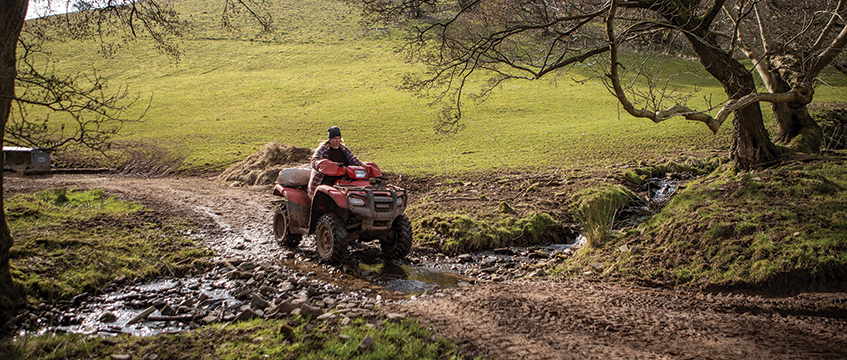Minimum planning is maximum flexibility: an apt description of many farmers’ approach to succession planning on their farms. October brought two challenges to this stance. The first was a bite-size guide (in their words) from the Royal Agricultural Society of England, Young people and succession planning: Overcoming barriers for next generation farmers. The second was Rachel Reeves’ Autumn Budget.
The Budget
Taking the latter first, the farming industry has been shaken and dismayed by major changes to agricultural property relief from inheritance tax. APR and business property relief will change substantially from April 2026. Until then, a landowning farmer can rely on these two reliefs to give virtually 100% relief against the value of the whole farm and all its assets from inheritance tax. A farm valued at £5m or £6m with machinery, stock and other stores worth, say, £2m would pay no inheritance tax. Any residual value on, say, the farmhouse would very likely be mopped up by the tax’s residential nil rate threshold.
In less than two years this will change. The 100% rate of relief will be limited to combined agricultural and business property of no more than £1m. Above this amount the relief will only be available at 50%. Our farmer’s estate in the last paragraph will now face a bill of up to £1.4m. Some figure! Some increase! More so with farming returns at probably no more than 2% on even the best farms – diverting nine or 10 years’ profit to pay off the tax. In practice this will be longer than a decade when the owner’s drawings, income tax and other liabilities, and reinvestment needs are considered. There may be some comfort in that much of the inheritance tax bill can be paid in interest-free instalments over 10 years.
Young people and succession planning
Timely then that the RASE issued its guide to succession planning at the start of November. This guide draws on several Nuffield Farming Scholarship reports which have studied different aspects of business succession and transfer in the UK and overseas over many years (click here for the report). What are the key messages?
- Act! Because if nothing is done, stress builds up, family relationships become strained and can eventually break down.
- Seek professional advice from land agents, solicitors and accountants. Recognise the need for clear and considerate communication: harder in practice than it might seem.
- Use a facilitator. One Nuffield report had found that this worked well in New Zealand. The facilitator is not there to impose a view but to make sure everybody’s views are expressed clearly and given suitable weight. It might be expected that a trusted professional adviser could double up in this role. Some, however, can be too hasty in imposing their own opinions and views and may also be seen as closer to one of the generations involved.
- There is more information in the guide on how the facilitation process might work, based on fieldwork in New Zealand. It is as important to understand the future needs of the family business as it is to understand the aspirations and fears of family members. Management of the process is vital in ensuring that everybody feels part of the solution.
- Move from family membership to business partners. As Alexa Parker, 2018 Nuffield scholar, says: “There is a right and a wrong way to integrate generations back into a family run business. Getting it wrong can lead to confusion and disconnect down the line. Getting this right means transitioning incomers from being family members only to also becoming professional partners in business.” This will also involve setting some boundaries and rules on how and by whom decisions will be taken in future.
- Consider the non-farming children. Sometimes fairness can be tough. Don’t wreck the business for equal distribution. Early planning can fill gaps with life assurance written in trust for the siblings who won’t take over the farm.
- Consider the business v the asset. Taking over the business does not necessarily mean control of the assets (land and buildings) on which the business is based. How can the asset be protected against bad decisions or unfortunate things like divorce?
- Plan for retirement. Can the business support retirees? Early planning can divert some income tax effectively into pension plans.
- Look at land tenure. Outright ownership by the next generation is not the only answer. Tenancies, joint ventures, contracting and partnership arrangements may all have a role to play.
- Should the inheritors have to buy the business from the older generation? This happens in Australia. The business should be strong enough to sustain the cost. If it is not strong enough, serious questions need to be asked.
- Look at other business structures: working through a corporate structure for example.
To these considerations should now be added the risk of changes in capital taxation. As an industry we have feared drastic changes to APR for years, but few seem to have ever taken their fears as far as planning for the worst. The Budget could have been much worse for APR.
Gift inter vivos insurance cover costs from as little as 0.5% of the value of the gift for a 60-year-old man, rising substantially for 70- and 80-year-olds but substantially less for a 50- and 40-year-old (0.2% and 0.1% respectively).
There are solutions to the new inheritance tax problem if timely action is taken. They need not be expensive, and they could benefit the farming business irrespective of the tax position. The real problem remains for those who have delayed acting for too long already, those well into their 70s and beyond.
Charles Cowap is a rural practice chartered surveyor and chartered environmentalist










